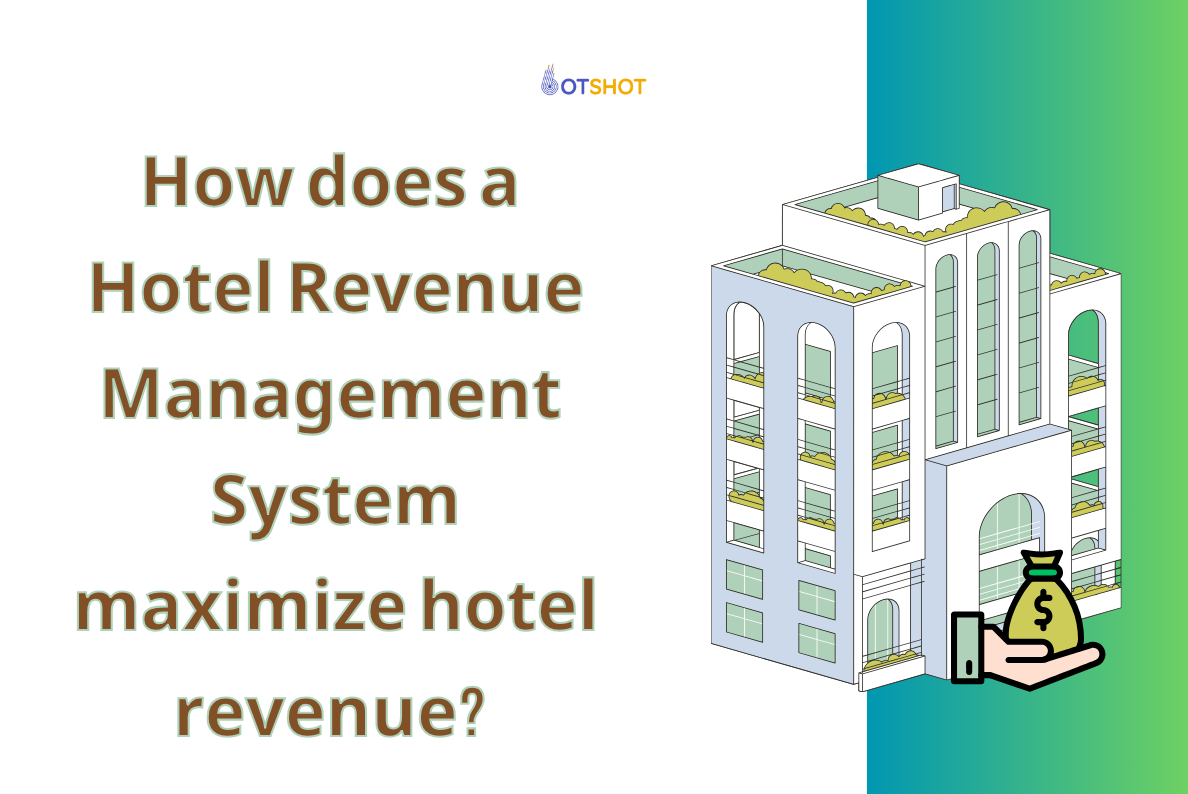Running a large hotel is not a cup of tea for everyone as you are required to make better decisions and meet customer demands at the same time.
Every hotelier is interested in deciding the best price for each hotel room and you can do so when you sell the right room to the right guest at the right time.
To do all the MATH and LOGIC, you need to invest in thehotel revenue management system. With RMS, you are not relying on GUT feeling because you have access to data to make data-driven decisions and plan your pricing strategy accordingly.
What is a hotel Revenue management system (RMS)?
Hotel revenue management software has become a guiding tool for hoteliers and revenue managers to make the right pricing decisions and maximize the bottom line of the hotel.
Before setting the optimal rate for each room, the software uses ML algorithms to predict consumer behaviour and consider other factors such as market demand and competitor prices.
So, RMS has become a MUST-HAVE necessity for every hotelier to sell the right room to the right guest at the right time.
There are instances when hoteliers rely on their instincts and set the wrong room rates for each hotel room. They either charge too high from the customer resulting in losing occupancy or charge too low which affects their profitability.
Investing in the right RMS proves to be GOLDMINE for hoteliers because they get access to a bunch of real-time insights through a single dashboard such as market demand, prices of competitors, past occupancy rates, etc.
6 Advantages of Hotel Revenue Management Software
1. More revenue = More profits
You can increase your hotel profitability by getting real-time insights about market demand, current trends, competitor pricing, etc. By analyzing such insights, you know how much you should charge for each hotel room so that you can increase your average daily rates (ADR).
Let’s take an example – The average occupancy rate for your hotel is typically 50% during the summer season. While hotels have a 50% occupancy rate during the summer season.
The property owner wants to maximize hotel revenue so relying on RMS is the profitable option in this case.
RMS recommends hotel managers maximize room rates during peak seasons ($500 per night for a room) while lowering their rates during periods of low demand ($200 per night for a room).
2. Forecasting demand
Demand forecasting refers to the identification of market demand for hotel rooms so that hoteliers can make effective revenue management and pricing decisions.
Moreover, it can be of great help to revenue managers in sending personalized offers to guests as RMS uses AI/ML algorithms to predict future demand and revenue performance.
It takes into consideration various factors such as historical data, competitor rates, past bookings, upcoming events, etc. By taking help from RMS, hoteliers can frame their pricing strategies accordingly to maximize revenue and occupancy rates.
3. Saves your time
Because RMS automates revenue-related operations, hoteliers can save the majority of their time. Otherwise, it would be challenging for them to analyze chunks of data, connect the dots, and generate reports on the go.
RMS on the other hand automates mundane tasks and provides you with everything at your fingertips.
For Instance – Hoteliers do not need to spend countless hours manually collecting data from various sources such as PMS, OTAs, etc.
It then complies with all the data to generate automated reports that provide a brief overview of various metrics such as average daily rate (ADR), occupancy rate, revenue per available room (RevPAR), etc. Now, hoteliers can make optimal pricing decisions and manage their hotel inventory.
4. Adopt dynamic pricing
Every hotelier these days is interested in maximizing their occupancy rates. And dynamic pricing is no such EXCEPTION when it comes to adjusting room rates as per current market demand. But how can you set the optimal pricing strategy every time?
It is where a hotel RMS comes into the picture as it updates room rates accordingly charges higher rates when there is a high demand and keeps the prices low during low demand.
5. Offers rate recommendations
A revenue management system for hotels suggests the best price recommendations to hoteliers by keeping track of various metrics such as historical prices, seasonality factors, pricing strategies of competitors, etc.
Thus, a hotelier need not worry about spending more hours analyzing room prices manually because everything is available to them a few clicks away.
6. Create personalized pricing strategies
Personalization is what today’s customers demand and to stand out from the crowd, hoteliers need to frame personalized pricing strategies to serve their guests way better.
All you need is to have a great RMS for your hotel which will do your job and come up with personalized pricing offers by analyzing various factors such as preferences of guests, what their demographics are, and booking patterns.
For Instance – If your hotel serves a specific category of travellers such as business travellers and family. It is expected that business travelers prefer to book a stay during weekdays and families intend to make reservations during the weekend.
With the help of RMS, hotels can analyze their booking patterns and set different pricing strategies for business travelers and families.
